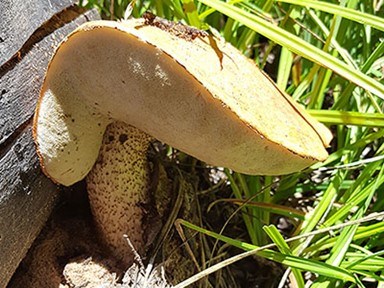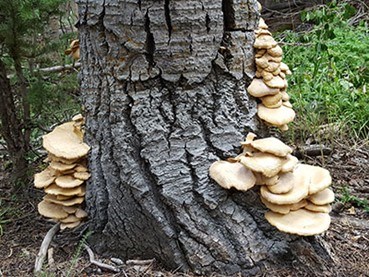Part of a series of articles titled The Midden - Great Basin National Park: Vol. 18, No. 2, Winter 2018.
Article
Introduction to Fungi in Great Basin National Park
This article was originally published in The Midden – Great Basin National Park: Vol. 18, No. 2, Winter 2018.

The next time you go for a hike, take a closer look at the trees. You may notice that from almost any vantage point, you can find all stages of growth and decay. You may not see any mushrooms unless there has been a recent rainy period, but the growing fungi that produce them are all around you. Without them, the forest would look quite different.
Fungi provide a major contribution to the availability of nutrients in the forest ecosystem. The most obvious is the decay of lignin and cellulose that allows trees to return to the soil from which they arose. Few other organisms have the ability to digest these tough materials.
Wood decay fungi are saprotrophic, which means they get their nutrients through the process of breaking down dead material. Some examples of saprotrophic fungi in the park include the oyster mushroom, Pleurotus populinus, which can be found growing on quaking aspen logs and snags, and the purple-hued Trichaptum abietinum found on rotting conifers.

Fungi belong to their own kingdom of life and are distinct from both plants and animals. Just as plant and animal species have diverse ecological roles, fungal species also vary in their methods of interacting with their environment. Some species are even predatory and produce chemical lures to attract and trap small animals such as nematodes or springtails. Other species are parasites of insects or plants.
Although rarely noticed, fungi are an important part of the ecosystem of Great Basin National Park. Each brief appearance of a mushroom indicates the presence of an extensive living organism that has been growing beneath the surface waiting for the rain to come.
Last updated: February 21, 2024
